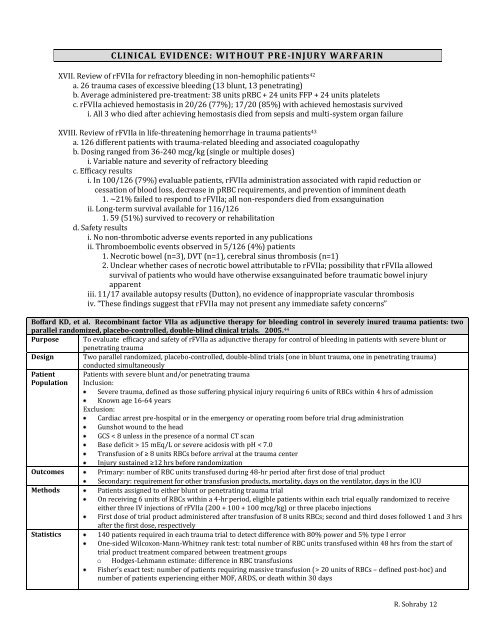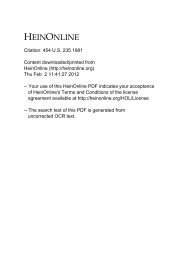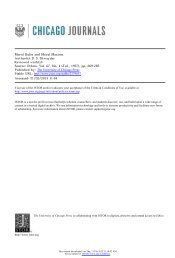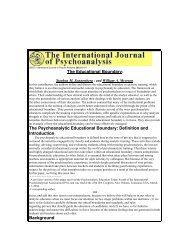Coagulation Factors in Controlling Traumatic Bleeds: FFP, PCC, or ...
Coagulation Factors in Controlling Traumatic Bleeds: FFP, PCC, or ...
Coagulation Factors in Controlling Traumatic Bleeds: FFP, PCC, or ...
You also want an ePaper? Increase the reach of your titles
YUMPU automatically turns print PDFs into web optimized ePapers that Google loves.
CLINICAL EVIDENCE : WIT HOUT PR E -INJUR Y WAR F AR IN<br />
XVII. Review of rFVIIa f<strong>or</strong> refract<strong>or</strong>y bleed<strong>in</strong>g <strong>in</strong> non-hemophilic patients 42<br />
a. 26 trauma cases of excessive bleed<strong>in</strong>g (13 blunt, 13 penetrat<strong>in</strong>g)<br />
b. Average adm<strong>in</strong>istered pre-treatment: 38 units pRBC + 24 units <strong>FFP</strong> + 24 units platelets<br />
c. rFVIIa achieved hemostasis <strong>in</strong> 20/26 (77%); 17/20 (85%) with achieved hemostasis survived<br />
i. All 3 who died after achiev<strong>in</strong>g hemostasis died from sepsis and multi-system <strong>or</strong>gan failure<br />
XVIII. Review of rFVIIa <strong>in</strong> life-threaten<strong>in</strong>g hem<strong>or</strong>rhage <strong>in</strong> trauma patients 43<br />
a. 126 different patients with trauma-related bleed<strong>in</strong>g and associated coagulopathy<br />
b. Dos<strong>in</strong>g ranged from 36-240 mcg/kg (s<strong>in</strong>gle <strong>or</strong> multiple doses)<br />
i. Variable nature and severity of refract<strong>or</strong>y bleed<strong>in</strong>g<br />
c. Efficacy results<br />
i. In 100/126 (79%) evaluable patients, rFVIIa adm<strong>in</strong>istration associated with rapid reduction <strong>or</strong><br />
cessation of blood loss, decrease <strong>in</strong> pRBC requirements, and prevention of imm<strong>in</strong>ent death<br />
1. ~21% failed to respond to rFVIIa; all non-responders died from exsangu<strong>in</strong>ation<br />
ii. Long-term survival available f<strong>or</strong> 116/126<br />
1. 59 (51%) survived to recovery <strong>or</strong> rehabilitation<br />
d. Safety results<br />
i. No non-thrombotic adverse events rep<strong>or</strong>ted <strong>in</strong> any publications<br />
ii. Thromboembolic events observed <strong>in</strong> 5/126 (4%) patients<br />
1. Necrotic bowel (n=3), DVT (n=1), cerebral s<strong>in</strong>us thrombosis (n=1)<br />
2. Unclear whether cases of necrotic bowel attributable to rFVIIa; possibility that rFVIIa allowed<br />
survival of patients who would have otherwise exsangu<strong>in</strong>ated bef<strong>or</strong>e traumatic bowel <strong>in</strong>jury<br />
apparent<br />
iii. 11/17 available autopsy results (Dutton), no evidence of <strong>in</strong>appropriate vascular thrombosis<br />
iv. “These f<strong>in</strong>d<strong>in</strong>gs suggest that rFVIIa may not present any immediate safety concerns”<br />
Boffard KD, et al. Recomb<strong>in</strong>ant fact<strong>or</strong> VIIa as adjunctive therapy f<strong>or</strong> bleed<strong>in</strong>g control <strong>in</strong> severely <strong>in</strong>ured trauma patients: two<br />
parallel randomized, placebo-controlled, double-bl<strong>in</strong>d cl<strong>in</strong>ical trials. 2005. 44<br />
Purpose To evaluate efficacy and safety of rFVIIa as adjunctive therapy f<strong>or</strong> control of bleed<strong>in</strong>g <strong>in</strong> patients with severe blunt <strong>or</strong><br />
penetrat<strong>in</strong>g trauma<br />
Design Two parallel randomized, placebo-controlled, double-bl<strong>in</strong>d trials (one <strong>in</strong> blunt trauma, one <strong>in</strong> penetrat<strong>in</strong>g trauma)<br />
conducted simultaneously<br />
Patient Patients with severe blunt and/<strong>or</strong> penetrat<strong>in</strong>g trauma<br />
Population Inclusion:<br />
Severe trauma, def<strong>in</strong>ed as those suffer<strong>in</strong>g physical <strong>in</strong>jury requir<strong>in</strong>g 6 units of RBCs with<strong>in</strong> 4 hrs of admission<br />
Known age 16-64 years<br />
Exclusion:<br />
Cardiac arrest pre-hospital <strong>or</strong> <strong>in</strong> the emergency <strong>or</strong> operat<strong>in</strong>g room bef<strong>or</strong>e trial drug adm<strong>in</strong>istration<br />
Gunshot wound to the head<br />
GCS < 8 unless <strong>in</strong> the presence of a n<strong>or</strong>mal CT scan<br />
Base deficit > 15 mEq/L <strong>or</strong> severe acidosis with pH < 7.0<br />
Transfusion of ≥ 8 units RBCs bef<strong>or</strong>e arrival at the trauma center<br />
Injury susta<strong>in</strong>ed ≥12 hrs bef<strong>or</strong>e randomization<br />
Outcomes<br />
Primary: number of RBC units transfused dur<strong>in</strong>g 48-hr period after first dose of trial product<br />
Secondary: requirement f<strong>or</strong> other transfusion products, m<strong>or</strong>tality, days on the ventilat<strong>or</strong>, days <strong>in</strong> the ICU<br />
Methods<br />
Patients assigned to either blunt <strong>or</strong> penetrat<strong>in</strong>g trauma trial<br />
On receiv<strong>in</strong>g 6 units of RBCs with<strong>in</strong> a 4-hr period, eligible patients with<strong>in</strong> each trial equally randomized to receive<br />
either three IV <strong>in</strong>jections of rFVIIa (200 + 100 + 100 mcg/kg) <strong>or</strong> three placebo <strong>in</strong>jections<br />
First dose of trial product adm<strong>in</strong>istered after transfusion of 8 units RBCs; second and third doses followed 1 and 3 hrs<br />
after the first dose, respectively<br />
Statistics<br />
140 patients required <strong>in</strong> each trauma trial to detect difference with 80% power and 5% type I err<strong>or</strong><br />
One-sided Wilcoxon-Mann-Whitney rank test: total number of RBC units transfused with<strong>in</strong> 48 hrs from the start of<br />
trial product treatment compared between treatment groups<br />
o Hodges-Lehmann estimate: difference <strong>in</strong> RBC transfusions<br />
Fisher’s exact test: number of patients requir<strong>in</strong>g massive transfusion (> 20 units of RBCs – def<strong>in</strong>ed post-hoc) and<br />
number of patients experienc<strong>in</strong>g either MOF, ARDS, <strong>or</strong> death with<strong>in</strong> 30 days<br />
R. Sohraby 12

















